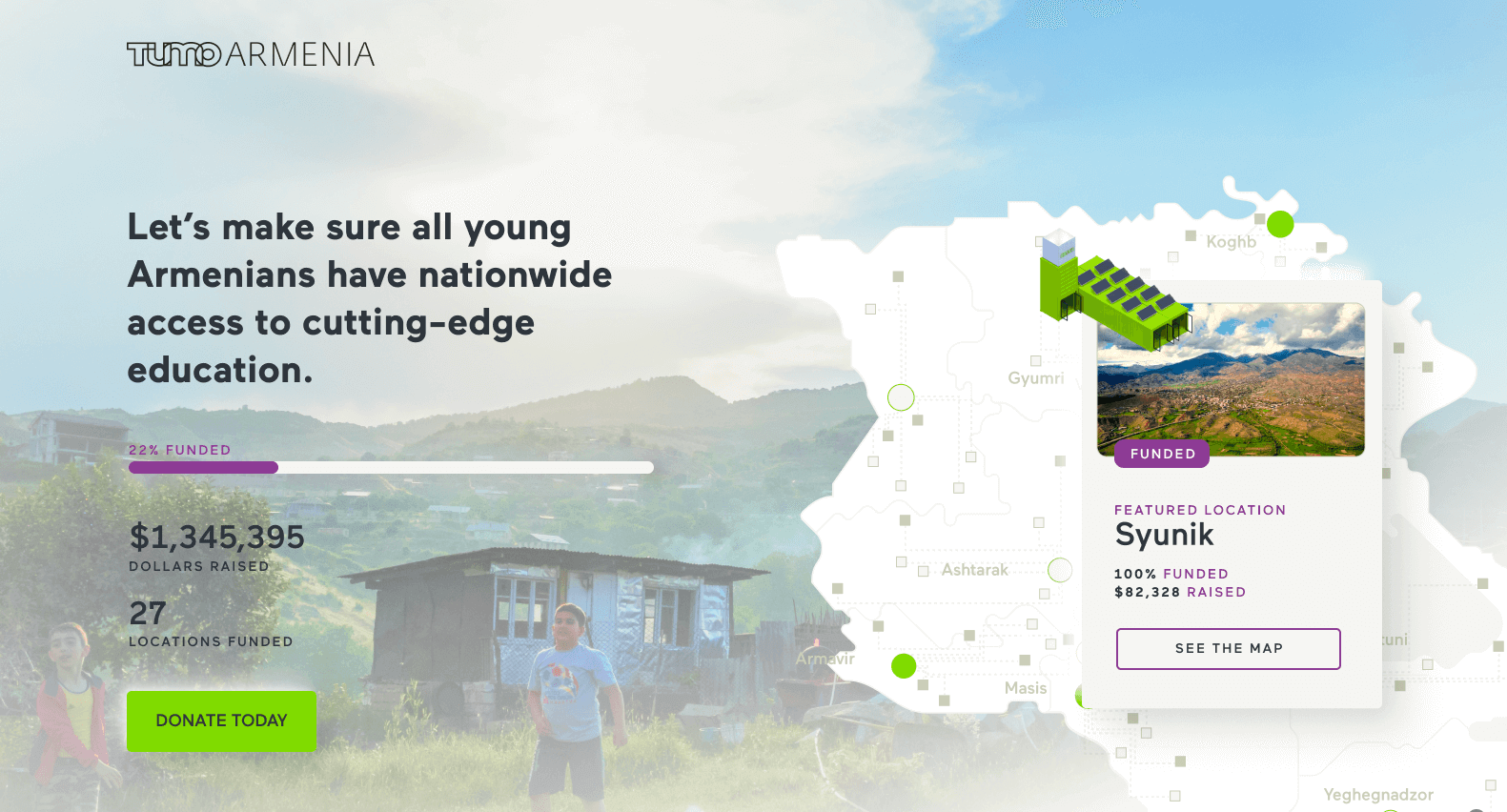The Hidden Cost of “No Platform Fee” Fundraising Tools — and What to Ask Instead

In the nonprofit world (or any world for that matter), the word free can sound like a gift. Free tools. Free fundraising pages. Free donor management. Free fundraising platforms. But as many organizations are learning, free isn’t always what it seems.
In recent weeks, the fundraising world has faced uncomfortable headlines, including a major platform auto-generating donation pages for over a million nonprofits without consent, and quietly adding default tips of up to 15%. These developments have reignited a larger conversation about transparency, trust, and the true cost of “free.”
It’s raised a critical question: what does “no platform fee” really mean, and who’s actually paying the cost of these transaction and payment processing fees?
These issues have also raised questions about how online and peer-to-peer fundraising campaigns are being presented online and how organizations can maintain brand control as their appeals are shared across social media.
Why “Free” Feels So Tempting, and How to See Past It
For nonprofit leaders, “free” doesn’t just sound appealing. It feels safe. When every dollar counts, choosing a no-fee platform seems like a responsible decision. But that sense of safety is psychological, not practical.
Behavioral economists call it the zero-price effect when something is labeled “free,” our brains stop evaluating its true cost. We assume we’re saving, even when the tradeoffs are hidden.
In fundraising, that can look like slower payouts, missing donor data, or unclear tipping models that shift the real cost onto your supporters.
The goal isn’t to avoid “free” altogether, it’s to see it clearly. When you understand what’s behind the promise, you can evaluate a tool on partnership, transparency, and trust rather than price alone.
And in today’s digital giving landscape, where supporters expect frictionless payment processing and payment options such as Apple Pay and Google Pay, clarity matters more than ever. Hidden credit card fees or unclear donation structures can quickly erode donor confidence.
Once you see past the surface appeal of “free,” you can evaluate what really matters, how your payment methods, donor preferences, and support options align with your fundraising goals.
The Myth of “Free”
It’s easy to see why “no platform fee” models attract nonprofits. Tight budgets and limited staff make every savings opportunity sound appealing. The promise of free fundraising tools feels like a relief. One less line item to explain to the board or justify to a donor.
But the reality is that every fundraising platform has costs. From servers and security to customer support, compliance, and payment options like credit card fees and digital wallets. Those costs don’t disappear just because they’re not on your invoice; they’re simply redistributed. Many platforms advertise zero platform fees but still pass along credit card fees, transaction fees, or processing costs through donor tips. Others restrict flexibility by limiting which payment methods or fundraising pages nonprofits can use, an important consideration for growing organizations that rely on modern donor management tools.
The real question isn’t whether you’re paying - it’s how and who.
As the Nonprofit Learning Lab observes, hidden costs and donor nudges blur the line between voluntary tipping and implied obligation.
When a fundraising platform markets itself as “free,” those costs are often passed along to donors through “tips,” transaction fees markups, or hidden service charges. It’s an approach that looks donor-friendly on the surface but often leads to confusion and frustration when supporters realize a percentage of their gift isn’t going directly to the cause they care about. It is instead going to transaction fees and payment processing.
This confusion doesn’t just risk short-term irritation, it undermines long-term trust and long-term donor relationships. Donors may hesitate to give again, not because they’ve lost faith in your mission, but because they no longer fully understand where their money goes.
“If a product is free, you’re often the product.” – Andrew Lewis
That quote, while blunt, captures an important truth for the nonprofit sector: when tools are offered for free, your donor data, brand visibility, and fundraising activity can become part of someone else’s business model.
Nonprofits need to think of fundraising technology not just as a cost but as a partnership in online fundraising and peer-to-peer fundraising. Transparent tools help you strengthen relationships, measure real impact through data analytics, and safeguard your reputation. Opaque ones might save a few dollars upfront but can chip away at the trust you’ve spent years building.
Unlike many “free” tools, Donately’s pricing is designed to be transparent. You know exactly what you pay and what you get. Our model gives organizations full control, ensuring that your donors’ experience reflects your values, not a platform’s revenue strategy.
How Tipping Became the New Platform Fee
In the early 2020s, tipping quietly replaced the traditional platform fee for several major fundraising tools. The concept was simple: rather than charge nonprofits a percentage, platforms began asking donors to “tip” the company at checkout.
On the surface, this seemed empowering. A voluntary way for supporters to help keep tools affordable for nonprofits. But the fine print told a different story.
Most of these tips were pre-selected on donation forms, typically ranging from 10% to 17% of the total donation. Donors often didn’t realize they could change it, or they assumed that tip benefited the nonprofit. In many cases, it didn’t.
On paper, it’s optional donor tipping. In practice, it’s often invisible.
This shift from transparent fees to donor-funded tips blurred the lines between generosity and obligation. It turned moments of giving into moments of confusion. It’s especially concerning for nonprofits that use fundraising sites integrated with multiple payment methods, since default settings on Apple Pay, Google Pay, or debit card checkouts can automatically include tips that donors may not fully understand.
When donors later discover that part of their contribution went to a for-profit platform, they can feel misled, and that damages not only their relationship with the platform but with the nonprofit itself.
This practice also distorts how organizations evaluate tools. “No platform fee” sounds ideal, but it hides an important tradeoff: when a platform relies on donor tips for revenue, its primary financial relationship isn’t with you, it’s with your donors.
That creates a subtle misalignment of incentives. Instead of optimizing for your long-term fundraising success, the platform is motivated to maximize the donor’s checkout experience, often nudging them toward higher “tips” rather than focusing on your mission story or impact.
As Brad Ton, a fundraising professional, wrote about the issue:
“When a platform profits from donor confusion, we all lose.”
Transparency isn’t about choosing the cheapest option. It’s about choosing the most ethical and sustainable one. The tipping model wasn’t born out of malice, but it has evolved into something nonprofits must now navigate with discernment.
By contrast, Donately’s model keeps nonprofits in control. We give you the flexibility to let donors cover processing and platform fees transparently, without manipulation or fine print. You see every transaction, every fee, and every donor choice, and so do your supporters.
That’s not just good fundraising. That’s good stewardship, and a foundation for deeper donor engagement through better online and peer-to-peer campaigns.
Why This Matters for Donor Trust
Transparency isn’t just an ethical choice in donor management; it’s a strategic one.
When donors give to your organization, they’re giving to you. Your mission, your story, and the confidence that their contribution will be used with integrity. The entire act of giving is built on belief: belief that their money will make a difference and that they can trust you to steward it well.
But trust is fragile. It takes time to earn and seconds to lose.
Even small moments of confusion, like seeing a mysterious “tip” added to a donation form can chip away at that relationship. A donor who feels tricked or uncertain won’t just close their wallet; they’ll close the door on future engagement, advocacy, or peer-to-peer fundraising on your behalf.
“Transparency is the foundation of trust. Without it, even well-intentioned systems can create barriers to generosity.” – Nonprofit Tech for Good
When donors feel informed during the donation process, they’re more likely to give again, and give more confidently. Transparency doesn’t diminish generosity; it amplifies it.
That’s why fundraising tools shouldn’t just process transactions. They should build trust at every step.
Clarity in your giving experience reassures supporters that their generosity is respected, and that every dollar is reaching its intended purpose. Over time, this clarity becomes a differentiator. Donors who clearly understand your mission and fee structure are more likely to become advocates, social sharing your campaigns or leading their own peer-to-peer campaign efforts. Transparency doesn’t just retain donors; it multiplies reach.
Tools like Donately, make this possible. Each donation confirmation is clear, each fee transparent, and each donor’s information fully under your control.
It’s a small but meaningful way to say: we value your trust as much as your generosity.
And in an era where public scrutiny is high and donor confidence can be shaken by a single news story, that kind of trust isn’t just nice to have. It’s essential to sustaining your nonprofit organization's mission and building long-term donor relationships.
Building a Transparent Giving Experience: What It Really Looks Like
So what does transparency actually look like in a modern giving experience? It’s more than a buzzword. It’s a set of small, intentional choices that create trust at every touchpoint.
- It looks like a donation page that clearly displays payment methods and processing fees before checkout.
- It looks like a confirmation email that itemizes each portion of a donor’s gift and reflects their donor preferences.
- It looks like language that tells donors how their data is stored, used, and protected, giving them confidence in your AI tools and data analytics practices.
Charity Navigator emphasizes, transparency is the single most important factor in donor confidence. And as Whole Whale notes, clarity about where and how donors give protects your organization from confusion and reputational risk.
Transparency is a series of small, deliberate steps that say to donors: “We value your trust as much as your contribution.”
As fundraising technology evolves, new artificial intelligence tools are beginning to influence how nonprofits analyze donor behavior, personalize outreach, and predict giving patterns. Used responsibly, these tools can deepen donor engagement and improve decision-making, but they also require transparency. Donors should know when and how their data is being used, especially as algorithms start shaping recommendations or messages on behalf of organizations.
Fundraising platforms such as Donately make that easier, but the mindset starts with you.
Questions Every Nonprofit Should Be Asking
Before adopting any “free” fundraising platform, take a step back and ask some deeper questions. Because behind every appealing headline, there’s always fine print — and your ability to maintain donor trust to reach those fundraising goals depends on knowing what’s behind the curtain.
These questions aren’t about skepticism; they’re about stewardship and help with donor engagement and donor management. They help you choose a fundraising tool that aligns with your organization’s values, not one that quietly compromises them.
1. Who owns the donor relationship?
This is the most important question of all.
If your platform doesn’t give you full access to your donor data: names, emails, transaction history, recurring gift records, then you don’t truly “own” the relationship. You’re renting it.
And if that data lives primarily in someone else’s system, you’re also trusting that platform to protect it, store it responsibly, and not use it for its own marketing purposes.
A healthy technology partnership should empower you to deepen donor relationships, not compete with them.
That’s why Donately’s integrations are designed to keep you in control. You own your donor list. You own your campaign data. We simply help you make sense of it.
2. Are tips or fundraising platform fees clearly disclosed?
Transparency should never be optional.
When donors choose to give online through a donation form, they deserve to know exactly how their money is being used. What portion supports your mission, what portion covers payment processing or platform costs, and how those fees protect the integrity of the transaction.
Some platforms bury this information deep in fine print, or worse, preselect options that automatically increase the total donation. While this may generate short-term revenue, it can quietly erode the donor experience and your credibility.
A transparent online fundraising platform tells the truth at every step. It lets the donor choose and never assumes consent.
3. Can donors easily opt out of covering costs?
Choice is the cornerstone of trust.
If a donor wants to help cover transaction costs when supporting nonprofit organizations, that’s great. But it should always be a choice, not an assumption. A pre-ticked box that says “Support the platform” isn’t generosity. It’s coercion dressed as convenience on fundraising sites.
When evaluating tools, go through your own donation flow and ask: would this feel clear if I were the donor? Does the platform explain who benefits and why? If not, it’s a red flag.
Donately allows donors to cover fees, but transparently and with customization options. Each donor sees the cost, understands what it supports, and can change it with one click. That’s how trust is built. Through clarity, not clever defaults.
4. Who controls your branding and data?
Your organization’s name, logo, and story are sacred. They are the essence of your mission’s credibility.
Unfortunately, as recent events have shown, some platforms use public nonprofit data to auto-create donation pages without consent. While the intent may be to “help,” the outcome is often confusion and lost control.
A donor might land on a page that looks like it’s yours but isn’t, leading to uncertainty about where their gift is going and who’s managing it. This could be amplified by that donor sharing that online fundraising page out through their social media.
Before signing up for any fundraising platform tool, confirm how your brand, data, and assets are being used and what are your customization options. Your digital presence should never be leveraged to serve another company’s SEO or marketing goals.
5. What does the fee (or tip) actually cover?
A platform fee isn’t inherently bad, it’s simply the cost of doing business transparently with payment gateways. The key is knowing what you get for what you pay.
Does your fee include data encryption, fraud protection, U.S.-based customer support, and a reliable infrastructure? Or are you paying simply for access to the tool?
A good partner is one who can tell you exactly where every cent of that fee goes, and why it matters.
These questions aren’t about skepticism. They’re about stewardship; ensuring every dollar, click, and donor interaction reflects your values and your mission.
What “Free” Really Costs
The “no platform fee” promise often hides a bigger cost: loss of clarity.
When the true cost of technology is disguised, the nonprofit ends up paying in different ways: reduced donor trust, brand confusion, and limited control over data and messaging.
Free tools may save a few dollars today but cost thousands in long-term donor loyalty.
“No platform fee doesn’t mean no cost, it just means the cost is hidden somewhere else.” – Sarah Ellis, Donately Customer Success
If you want to understand how your donation page builds trust (or confusion), Nonprofit Tech for Good’s guide on transparent giving is a great reference.
Where Donately Stands
At Donately, we believe clarity builds confidence, and confidence fuels generosity.
We’ve seen firsthand how nonprofits struggle to navigate unclear pricing models, donor confusion, and inconsistent support. That’s why we built our platform differently, to make transparency the default, not the exception.
We don’t hide behind tipping models or shifting definitions of “free.” We’re honest about our pricing because we believe trust is earned through clarity.
Our Free Tier includes a simple 4% platform fee, with the option for donors to cover it -- openly and intentionally. There are no hidden add-ons, no forced tips, and no surprise fees later in the process. We also provide numerous support options to help you get started.
That 4% supports:
- Data Security & Privacy - We protect your donor information with industry-leading safeguards. Donor and donation data is never shared or sold and you have full access to your donor data in our CRM tool.
- Platform Features and Stability - We invest in uptime, infrastructure, and fraud prevention, so your donors can give with confidence.
- Customer Success - We offer real human support, resources, and strategy guidance, not just chatbots or ticket queues.
- Ethical Stewardship - We advocate for clarity in giving across the entire fundraising sector, not just within our own ecosystem.
- Security Measures & Fraud Prevention - Advanced encryption, threat monitoring, and safeguards that help prevent data breaches and keep donor information secure.
- Connected Integrations & Campaign Tools - Native third-party integrations with platforms like Salesforce, HubSpot, and Mailchimp streamline donor management and campaign performance metrics reporting, while access to our Campaign Marketplace and customizable campaign templates helps organizations launch professional, high-performing fundraising pages and custom donation forms faster.
As Donately founder, Javan Van Gronigen, explains in our open letter to nonprofit leaders:
“We’d rather be honest about the cost of great fundraising software than pretend it’s free and pass the bill to someone else.”
That belief shapes how we price, design, and partner. We exist to give nonprofits a tool that strengthens donor relationships, not one that undermines them.
The Bottom Line
The recent controversies aren’t just cautionary tales; they’re reminders of how vital transparency is to the health of the nonprofit sector.
Because when donors give, they’re not just funding your mission; they’re investing their trust.
And trust can’t be auto-generated. It’s built, one transparent transaction at a time.
If you’re ready to see what transparent online fundraising looks like, we’d love to help! Create your free Donately account today.
Let's Fundraise Together!
Sign up today and see why thousands of organizations trust Donately to manage their online fundraising.
.webp)





